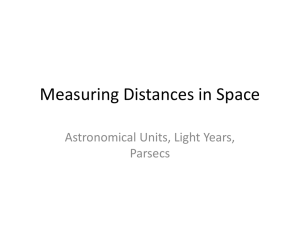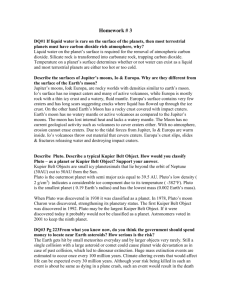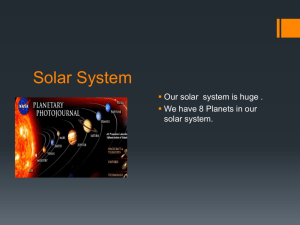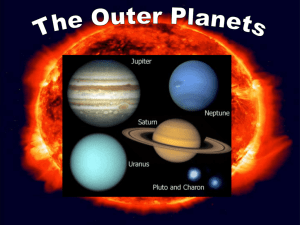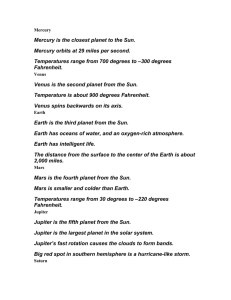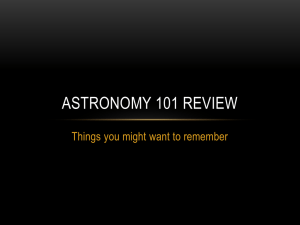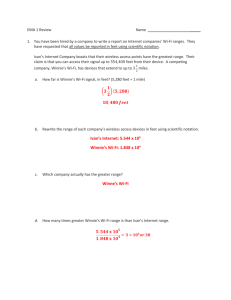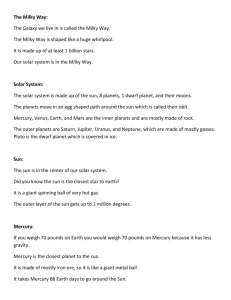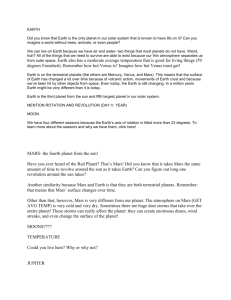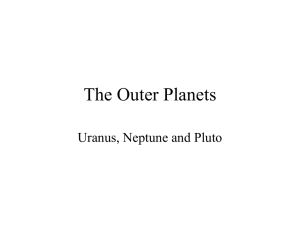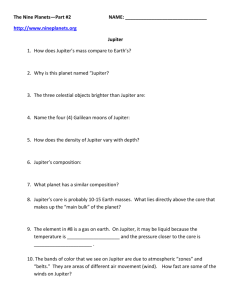Astro 101 assign2
advertisement
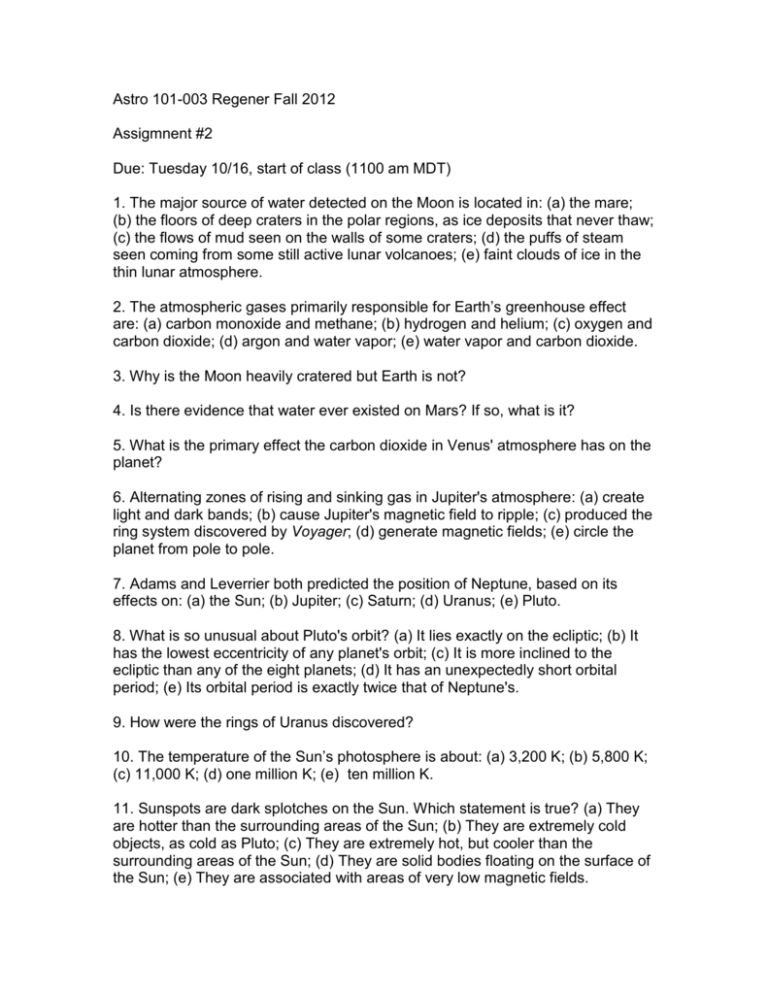
Astro 101-003 Regener Fall 2012 Assigmnent #2 Due: Tuesday 10/16, start of class (1100 am MDT) 1. The major source of water detected on the Moon is located in: (a) the mare; (b) the floors of deep craters in the polar regions, as ice deposits that never thaw; (c) the flows of mud seen on the walls of some craters; (d) the puffs of steam seen coming from some still active lunar volcanoes; (e) faint clouds of ice in the thin lunar atmosphere. 2. The atmospheric gases primarily responsible for Earth’s greenhouse effect are: (a) carbon monoxide and methane; (b) hydrogen and helium; (c) oxygen and carbon dioxide; (d) argon and water vapor; (e) water vapor and carbon dioxide. 3. Why is the Moon heavily cratered but Earth is not? 4. Is there evidence that water ever existed on Mars? If so, what is it? 5. What is the primary effect the carbon dioxide in Venus' atmosphere has on the planet? 6. Alternating zones of rising and sinking gas in Jupiter's atmosphere: (a) create light and dark bands; (b) cause Jupiter's magnetic field to ripple; (c) produced the ring system discovered by Voyager; (d) generate magnetic fields; (e) circle the planet from pole to pole. 7. Adams and Leverrier both predicted the position of Neptune, based on its effects on: (a) the Sun; (b) Jupiter; (c) Saturn; (d) Uranus; (e) Pluto. 8. What is so unusual about Pluto's orbit? (a) It lies exactly on the ecliptic; (b) It has the lowest eccentricity of any planet's orbit; (c) It is more inclined to the ecliptic than any of the eight planets; (d) It has an unexpectedly short orbital period; (e) Its orbital period is exactly twice that of Neptune's. 9. How were the rings of Uranus discovered? 10. The temperature of the Sun’s photosphere is about: (a) 3,200 K; (b) 5,800 K; (c) 11,000 K; (d) one million K; (e) ten million K. 11. Sunspots are dark splotches on the Sun. Which statement is true? (a) They are hotter than the surrounding areas of the Sun; (b) They are extremely cold objects, as cold as Pluto; (c) They are extremely hot, but cooler than the surrounding areas of the Sun; (d) They are solid bodies floating on the surface of the Sun; (e) They are associated with areas of very low magnetic fields. 12. What process explains the Sun's immense and sustained energy output? 13. A star has a parallax of 0.01 arc seconds. Its distance is: (a) 0.01 parsecs; (b) 0.1 parsecs; (c) 1 parsec; (d) 10 parsecs; (e) 100 parsecs. 14. What do we mean when we say a star has proper motion?



